EVs are steadily claiming a larger share of the consumer market, and medium- and heavy-duty commercial fleet operators are starting to follow suit. But neither market will achieve critical mass until there’s a robust, nationwide network of fast, efficient, and cost-effective commercial EV charging infrastructure. Here, Miguel Gudino, an Associate Application Engineer at RS, addresses various EV charging challenges and opportunities, ranging from charging station design strategies to the advanced component- and device-level solutions essential to fueling the evolution of EV charging infrastructure.
Miguel Gudino, Associate Application Engineer, RS

Electric vehicles are claiming a larger and larger share of the overall vehicle marketplace due to several forces working in their favor. As EV prices drop, more consumers are interested in investing in them and reaping the long-term cost benefits. Many consumers are also becoming more eco-conscious and are seeking solutions that are more environmentally friendly and reduce emissions. Legislation such as the Inflation Reduction Act is also incentivizing EV investment on both the production and consumer side.
Fully electric vehicles accounted for 8.1% of all new sales in the United States during Q4 2023 — a new record that represents a 40% year-over-year increase. The growth in EV sales has been steady in the last few years as well. In 2022, EVs made up just 5.8% of new sales in the United States, which was up from 3.2% in 2021.
Many associate the cost benefits of EVs primarily with fuel costs. And that’s certainly a factor, as AAA estimates that it costs more than twice as much to fuel a gas-powered vehicle. But EVs also offer a simpler design and have fewer moving parts than gas engines, so they require less maintenance. For example, EVs don’t require oil changes or air filter replacements. As such, EVs are approximately $950 less expensive to maintain annually than their gas-powered counterparts. Just as more consumers are starting to move toward electrification, so too are commercial fleets. Medium- and heavy-duty (MD/HD) commercial vehicles have a significantly higher environmental impact than light-duty commercial vehicles and passenger vehicles. So, transitioning them to electric power is a high priority in terms of reducing greenhouse gas emissions and combating climate change.

The good news is that many forms of commercial fleets are well-suited for an EV upgrade. Vehicles including delivery vans, transit buses, school buses, and refuse trucks generally use predictable routes at predictable times, which makes it easier to figure out what type of battery and charging infrastructure operators need to fulfill their work and to schedule recharging during planned downtime. In addition, the increased fuel efficiency of commercial EVs, combined with their lack of transmissions, spark plugs, and fuel pumps, can provide fleet operators with substantial total cost of ownership savings over the life of the vehicles.
Commercial EV fleets also offer clear environmental benefits, which is especially important considering the environmental impact of their gas-powered counterparts. According to a National Renewable Energy Laboratory (NREL) analysis, MD/HD trucks account for 26% of national fuel use despite making up just 4% of the total vehicle population, and greenhouse gas emissions from these trucks continue to increase at a rate faster than emissions from light-duty vehicles.
Plus, commercial EV fleets don’t produce tailpipe pollution, which is linked to asthma, lung cancer, and heart disease, so they support healthier communities in addition to global sustainability efforts.
Building Infrastructure to Meet Demand
The successful nationwide deployment of EV charging infrastructure is essential to the widespread adoption of commercial EV fleets, which U.S. policymakers have identified as a clear goal by committing to 100% zero-emissions medium- and heavy-duty truck sales by 2040.
The current patchwork network of EV charging infrastructure is suppressing both consumer and commercial EV demand, but that’s finally about to change. According to the Research and Markets report “Electric Vehicle Charging Station Global Market Opportunities And Strategies To 2032,” the global EV charging station market is forecast to exhibit a compound annual growth rate (CAGR) of 30.2% over the next 10 years. Currently a $5.4 billion market, it’s projected to be valued at $20.94 billion in 2027 and $75.5 billion in 2031.
The growth of the EV charging market is projected to further increase government investment, reduce EV battery costs, and fuel EV demand, as well as elicit higher fossil fuel rates and future restrictions on gas and diesel vehicles. Commercial charging dominates the market with a 77.8% share compared to home fueling stations, and this market is expected to grow at a CAGR of 33.8% to 2027. But high development costs and a lack of standardization could mitigate growth in the short term.
Getting Smart About Commercial EV Infrastructure
Although the commercial EV charging market is growing steadily and projected to continue increasing its pace, it’ll still be a long time before reliable, nationwide infrastructure is fully in place. So, along with lower fuel ranges, potentially long recharge times, and higher purchase prices, it remains a hindrance to the widespread adoption of EV technology. As such, EV charging infrastructure builders and operators will have to be strategic about alleviating these concerns.
For example, charging for MD/HD commercial EV fleets should be tailored to the specific needs of these vehicles as opposed to a universal model. The right approach will likely entail a combination of slower (Level 2) private charging depots and faster (Level 3) public charging stations that can be matched to the operating schedules and charging needs of a particular fleet. Commercial EVs with consistent operating schedules and short-to-moderate routes, including many delivery trucks and buses, can receive slower charges during scheduled downtime or periods of loading and unloading, which is a practice known as “opportunity charging,” and they account for most of the vehicles in the average commercial fleet. Approximately 90% of MD/HD commercial vehicles drive less than 250 miles per job. Long-haul trucking, on the other hand, needs faster charging and also requires more stations along rural interstates. But future increases in average EV range and the availability of commercial EV charging equipment could make off-shift charging more viable as well. Companies investing in commercial EV charging stations will also need to be strategic in terms of future planning. Both current and new EV charging infrastructure will likely require costly upgrades down the road. So, strategies like designing infrastructure to accommodate higher future demand — rather than just current needs — using concepts such as modular charging stations is likely to prove well worthwhile in terms of the extra upfront installation costs.
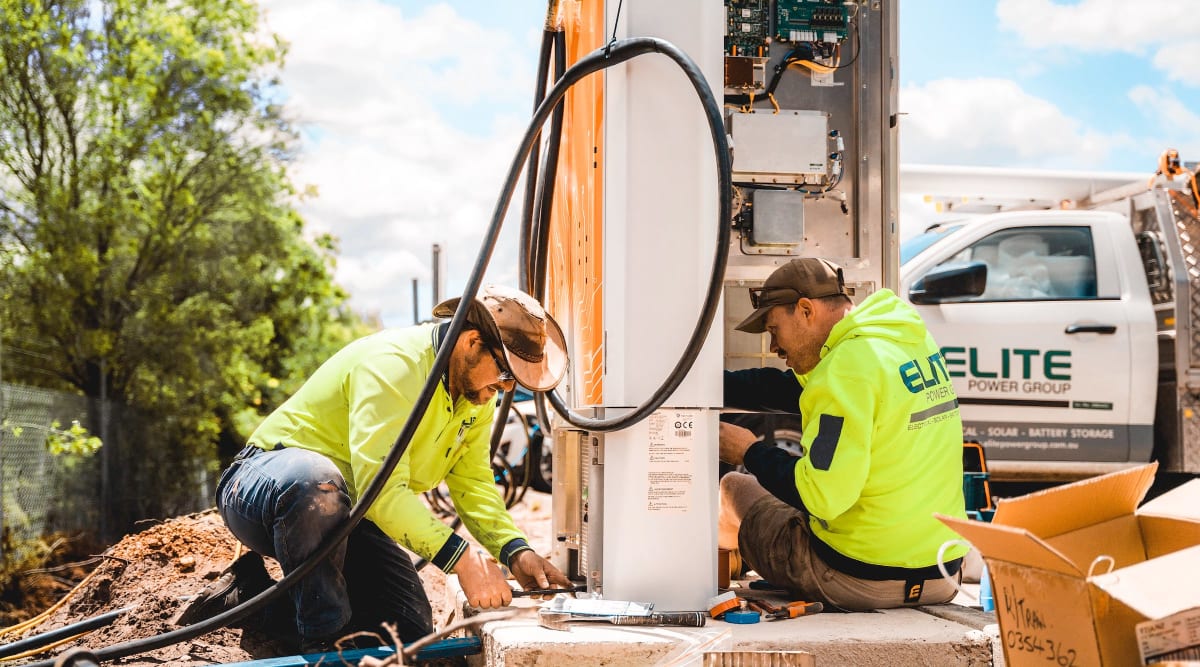
Other new EV infrastructure technologies worthy of investment include DC charging stations and networked chargers. DC charging stations are currently less common than AC charging stations but will speed up charging time at both levels. More cost-efficient Level 2 and 3 DC EV charging stations are being developed, and while the hardware, installation, and operating costs for DC charging stations still outpace those same costs for AC charging stations, being able to charge more vehicles more rapidly could eventually help recoup those costs. Networked EV chargers also have higher upfront costs but allow operators to make smarter decisions about their fleets. Networked chargers are connected to the internet and transmit relevant data, such as charger availability, remote customer support, and firmware updates, and allow operators to control when and how much vehicles are charged to maximize efficiency.
Component and Device Innovation Fuels Evolution in EV Infrastructure
EV charging infrastructure is only as good as the technology it’s based on — all the way down to the component and device level. In fact, innovations at this level are central to the effective development and deployment of commercial EV charging infrastructure, which is crucial for the increased adoption of EVs. Components and devices essential to the continued evolution of commercial EV charging infrastructure include contactors, industrial transformers, DC power modules, EV charging control boards, EV charging station test adapters, and HMIs.
Many of the electronics industry’s most trusted suppliers — and especially those within the power electronics segment — are collaborating with upstream manufacturers to overcome the many challenges impeding the rapid development of a robust, nationwide network of commercial EV charging infrastructure and, in turn, achieving national and global greenhouse gas emission goals to better combat climate change.
Essential Components and Devices for Commercial EV Charging Infrastructure

Contactors are electrical devices designed to repeatedly switch circuits on and off in high-current, high-voltage applications. As such, they’re typically larger than standard relay switches (although still quite portable and well-suited for field use) and offer a wide range of safety cut-offs and protections.
Sensata Gigavac Clean Energy GX Series contactors (pictured) are reliable, long-lasting, and engineered to switch loads up to 800VDC. They are versatile enough to be mounted in any position, durable enough to withstand environmental hazards including submersion and extreme operating temperatures ranging from -55°C to +85°C, and ideally suited for battery charging power management systems.
Industrial transformers are used to minimize power losses, regardless of the distance traveled, and safely increase or decrease voltages prior to distribution to ensure that connected equipment receives the appropriate amount of power. They can also be used to provide isolation between two parts of a circuit. Industrial transformers can vary in size from miniscule devices in compact equipment to massive devices that weigh several tons and are widely used in industrial power distribution systems. In EV charging infrastructure, they’re essential for monitoring and controlling the voltage flowing from the power source to the battery and enabling the simultaneous charging of multiple vehicles.
Hammond Power Solutions Sentinel Series industrial transformers (pictured) are engineered for energy efficiency, designed to help combat climate change, and compliant with the latest energy standards set by the Department of Energy. They’re housed in standard Type 3R enclosures suitable for indoor and outdoor applications and calibrated up to 1,000kVA, and their standard 10kV basic insulation level (BIL) rating provides high-reliability protection against critical equipment failure resulting from hazards like voltage spikes. In addition, their high efficiency performance reduces excess heat generation, thermal management requirements, and total cost of ownership over the product lifetime.
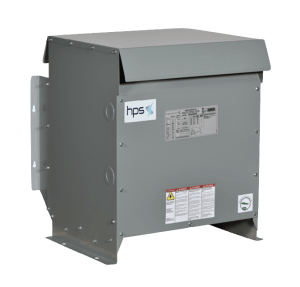
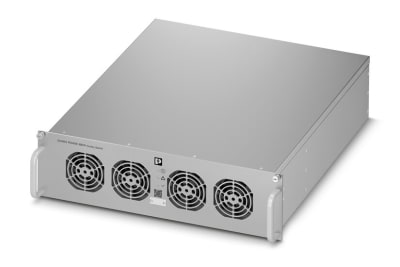
DC power modules can handle higher voltages and currents than AC power modules and are essential for DC EV charging infrastructure. DC power modules reduce design time, increase power efficiency, which can reduce costs, and are scalable, which makes them especially valuable to the steadily expanding network of commercial EV charging infrastructure.
Phoenix Contact CHARX DC power modules (pictured) are designed for use in high-current and high-voltage DC grids, energy storage systems, AC microgrids, hydrogen electrolysis units, and commercial DC EV charging applications. They provide up to 360kW of power to enable fast and efficient EV charging and are compatible with standard 19-inch cabinets.
EV charging control boards manage all the complex processes involving power conversion and communications between electric vehicles and charging stations, including regulating the flow of power, ensuring safe, efficient, and reliable operation, and providing vital information to both vehicles and users. These boards are built to stringent hardware and software specifications, designed to handle a wide range of use cases, and equipped with powerful processors capable of executing complex communication, real-time monitoring, and enhanced efficiency tasks quickly and seamlessly. High-quality EV charging control boards will also offer adequate memory, various connectivity options, a secure and reliable operating system, diverse communication protocols for broad compatibility, and enhanced security features.
Phoenix Contact offers a DC charging controller (EV-PLCC-AC1-DC1) (pictured) that satisfies these demands and integrates all of the necessary EV charging station interfaces — including TCP/IP communication, GSM/UMTS, serial communication, digital I/O, and vehicle interfaces — in a single board. It can function as a programmable charging controller for both AC and DC charging stations and has function blocks for vehicle communication in accordance with DIN SPEC 70121 and an integrated 3G mobile network modem. It’s also modular, scalable, and easy to install.
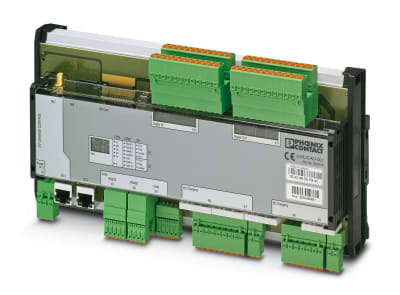

EV charging station test adapters are used to perform a wide range of tests used to reveal the maximum current available for charging — including ground fault, wire insulation, voltage measurement, and duty cycle tests — by imitating an EV. This eliminates the need to have EVs present when troubleshooting and maintaining charging stations, which — until MD/HD commercial EVs are far more prevalent — is extremely convenient.
Fluke FEV100 EV Charging Station Test Adapter Kits (pictured) allow you to simulate control pilot (CP) errors and protective earth (PE) fault errors to easily check for the presence of dangerous voltage with separate phase LED lamps and are built in accordance with IEC/EN 61851-1 and IEC/HD 60364-7-722.
HMIs are dashboards used to control machinery and translate intricate data into actionable information. They feature intuitive displays that allow operators to accurately contextualize and leverage real-time information and make better, more effective, and efficient decisions. Further, HMIs don’t just empower decisions in the moment; they allow users to integrate historical data and trends to anticipate future needs and improve quality. Effective HMI designs for EV charging infrastructure can simplify the charging process, improve safety, and enhance the user experience.
Beijer Electronics X2 Series HMIs (pictured) feature robust die-cast aluminum form factors designed to withstand mechanical stresses and extreme temperatures. They also have IP65/66, NEMA 4X/12, UL50E Type 4X/12, and marine protection ratings ideal for demanding industrial environments and UL, CE, FCC, and KCC certifications to ensure quality assurance and global compliance. Additional features include LCD touchscreens with customizable interfaces, integrated IEC 61131-3 PLC functionality for enhanced control, and ARM processors that deliver swift program execution and screen transitions, which is essential for complex visualization tasks.
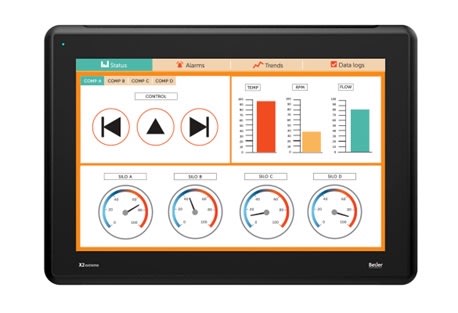
Developing Advanced EV Charging Infrastructure? Trust RS for Your Component and Device Needs.
EVs are steadily claiming a larger share of the consumer market as falling prices combine with financial and environmental benefits, and commercial fleet operators are starting to follow suit. Medium- and heavy-duty commercial vehicles like transit buses and delivery trucks create a disproportionate amount of emissions. So, from an environmental perspective, it’s crucial that MD/HD vehicles adopt EV technology sooner than later. Switching commercial fleets from gas-powered to electric technology also has significant cost benefits over the life of the vehicles, which makes them even more attractive for fleet owners and operators. However, neither market will ever reach critical mass without significantly more commercial EV charging infrastructure.
Government investments and initiatives combined with sustainability and cost incentives are encouraging companies ranging from component and device manufacturers to EV charging station OEMs to develop innovative solutions that will help support the development of a robust, nationwide network of fast, efficient, and cost-effective commercial EV charging infrastructure.
RS supports this rapidly evolving market with a robust portfolio of components and devices essential for EV charging infrastructure, manufactured by many of the industry’s most trusted suppliers, backed by our experienced customer support team, which anticipates and attends to customer needs throughout the design, build, and maintenance phases, and enhanced by our omnichannel ease of doing business.
For more information about RS solutions for EV charging infrastructure and related application areas, visit our alternative energy page and the links embedded throughout this article, and check out our collection of expert insights into and advice about the industry. For assistance identifying, procuring, deploying, and maintaining products that can help improve the speed, safety, and efficiency of your commercial EV charging infrastructure, please contact your local RS representative at 1.866.433.5722 or reach out to our technical product support team.







